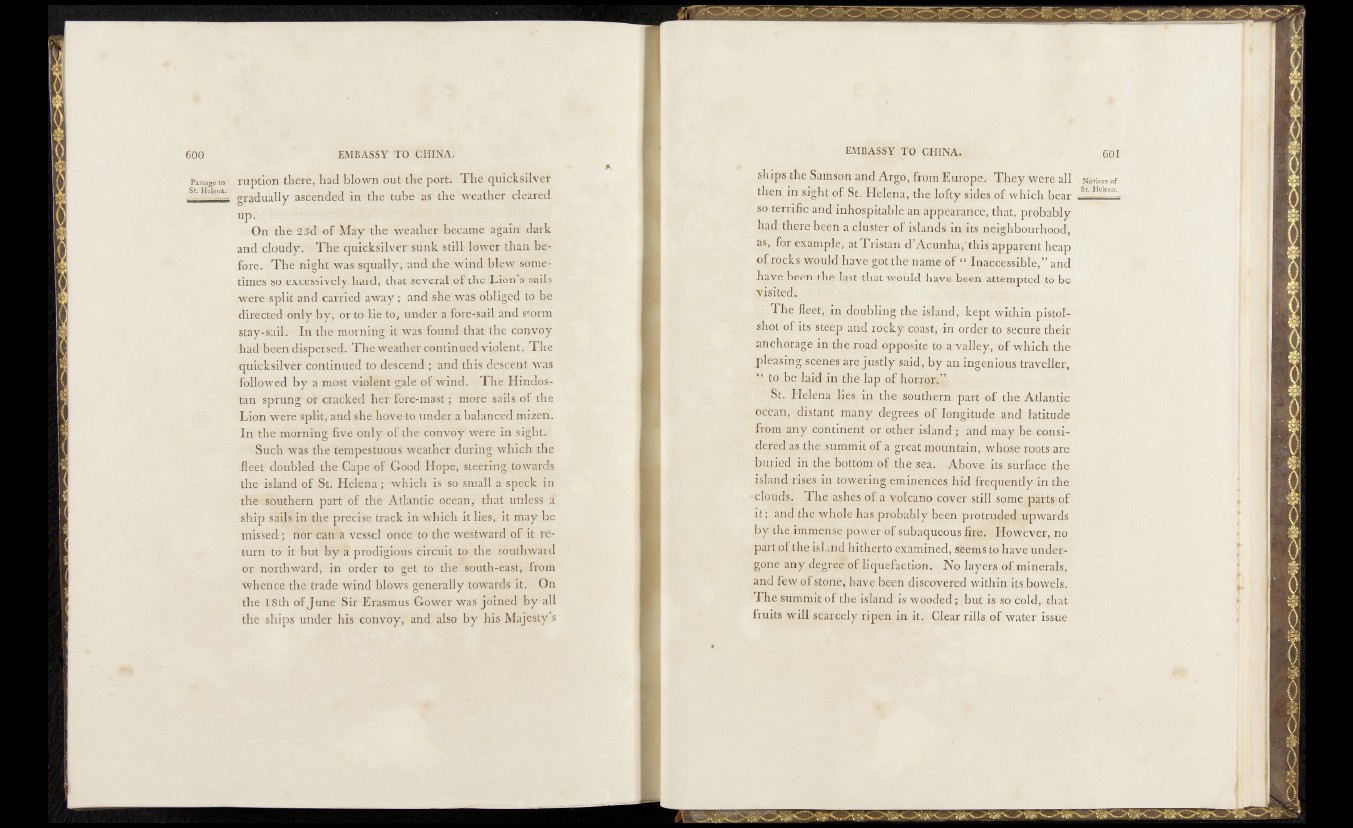
ruption therè, had blown out the port. The quicksilver
gradually ascended in the tube ‘as the: weather cleared
mp. I " «r'
On the 23d of May "the weather became again dark
and cloudy. The quicksilvePsunk still lower: than before.
The night Was squally, and the wind blew same1
times so excessively.hard, that several of the dLionV sails
were; split and carried away; and she was obliged tójbè
difefcted only by,; or to lie to, under h fete-sail andrspbrm
stay-sail. In thecmorning it was found thafrthe convoy
had been dispersed. The weather continued violent. The
quicksilver continued to descend ; and th is klëseent was
followed by a most violent gale; of wind. The Hifuios-
tan sprung or cracked her fore-mast; more saris of the
Lion were split, and shehovbto under a balanced mi zcn .
In the meaning five only of the convoy were in sight.
Such was the tempestuous weather during which the
fleet doubled the Cèpe of Good Hope,' Steering towards
the island of St. Helena ; which is so small a-speck in
the southern part of thé Atlantic ocean, that unless Ï
ship sails in the precise track in which it lies, it may be
missed ; nor cafife vessel once to the westward of it return
tor it but by a prodigious circuit t® the southward
or northward, in order to get to the touth-eaSb, from
whence the trade wind blows generally towards it. On
the T8th of June Sir Erasmus Gower was joined by all
the ships under his convoy, and also by his Majesty’s
ships chfeSamson and Argo, foom.Europe. They-were all ib ic e s of
tli^n in s-ight of St. Heferiai,',‘fr’he^lofty Sides, of.which bear S*~^le--
,so terrific aml| i n hos p i t abl e-an appearan ce; th at, pibbahly
had tjhejq beenra clusyqr.of islandiinj$ts neigfibourhoexli
as, for example, at Tristan1 d’Acunha/fchis'app.arent heap
"vsronld havegetthe name of “ Inaccessible,” and
^Ifstithat would hayg been, attempted to be
.visited:
Thte fleefyin'fdoubling the-,island,;kept within pistol-
shqt of its-steeg and rock^cqast, in ordpr to secure their
anchorage in>the road,opposite to- a.valley, of which the
.plgasi^g scenes are.justly said; by an ingenious travellers,
| | •« y ^ la id in-fire lap of;homg^,:
St. Helena „lies in the southern part of the Atlantic
bpl^py^iliarft many;, degrees. of longitude,and latitude
*fr^m>any eontipenj^ or, other i s l a n d and maybe .corisi-
©fjpgKeait mountain, whose rsoq,ts are
Above, ks.surface. 'the
island risesjdp towering eminences hid frequently in the
'cloud?. The ashes of a .volcano (Coyer still..some^^rtsnf
it-; and the whole has probably^.been protraded^'wards
by the immense power' of subaqueous fire.nHowev^Fy np
part of the island hitherto examined, seems’to have undejy-
(gone any degrb^of liquefaction. layers of minerals,
and few qf Stone, have.be’en discovered within its bowels.
The summitof the island i&^qoded;»hut is so cold, that
fruits will scarcely ripen in it. Qfear rills of water issue ’